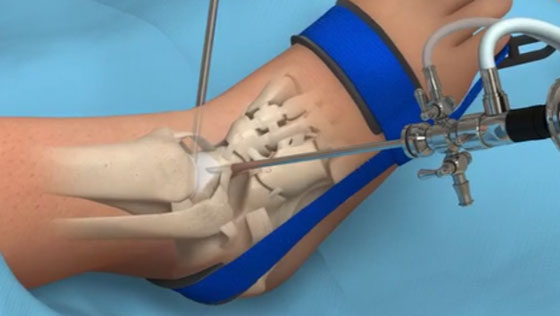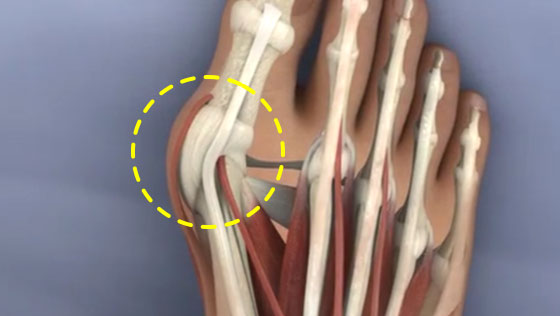What is Total Ankle Replacement?
Total ankle replacement (also known as TAR, total ankle arthroplasty, or TAA) is a surgical procedure performed to replace damaged portions of the ankle with an artificial implant.
Key statistics about Total Ankle Replacement
- Up to 90% of patients who undergo TAR report decreased pain and high satisfaction with the results of the procedure[1]
- Patients spend an average of 2.5 days in the hospital following in-patient TAR[2]
- More than 90% of total ankle replacements last for 5 years[3]
- Nearly 80% of end-stage ankle arthritis is a result of a previous traumatic injury[4]
- Commonly, patients with end-stage post traumatic ankle arthritis are 10 to 30 years younger than patients with end-stage primary hip or knee arthritis[4]
Expert Insights
Understanding Ankle Arthritis - J. Carr Vineyard, MD
Ankle Anatomy
The ankle is a complex joint formed by three bones: the tibia, the fibula, and the talus.
Articular cartilage covers the ends of the bones, helping to absorb shock and allowing the bones to glide smoothly against one another.

Why is Total Ankle Replacement performed?
Total ankle replacement is performed primarily to relieve pain and stiffness caused by arthritis. Arthritis occurs as the cartilage that cushions the ankle wears down, causing the bones to grind against each other. This results in pain and inflammation, and can lead to bone deformity and a loss of joint mobility.
When the cartilage damage from arthritis is so severe that all cartilage must be removed, a total ankle replacement is performed.
Who needs Total Ankle Replacement?
Ankle arthritis may be the result of normal wear and tear due to aging (osteoarthritis), or may be caused by an ankle injury (post-traumatic arthritis), autoimmune disorder (rheumatoid arthritis), or malalignment of the limb.

How is Total Ankle Replacement performed?
- The surgeon will make an incision and access the ankle joint.
- The damaged portions of the tibia and talus are removed.
- The surgeon will insert the tibial and talar implants into the bone. A plastic insert is affixed to the tibial implant in order to help the implant surfaces glide smoothly against one another.
- Finally, the surgeon will make sure the ankle is properly aligned, and the incision will be closed with sutures or surgical staples.

What are the risks of Total Ankle Replacement?
It is uncommon to experience complications from TAR, but potential risks may include:
- Infection
- Blood clots
- Nerve or blood vessel damage
- Loosening or wearing down of the implant over time
How long does it take to recover from Total Ankle Replacement?
-
24 hours after surgery
Physical therapy will begin. Blood thinners and pain killers may be prescribed. -
1-3 days after surgery
Most patients are discharged from the hospital. The ankle will be in a cast and crutches will be provided to keep weight off of the affected leg. -
2 weeks after surgery
Any non-dissolvable sutures and staples are removed and bruising and swelling begin to subside. The foot will be placed in a protective boot. -
4 weeks after surgery
Most patients will begin to place weight on the affected foot while still wearing the boot. -
6-8 weeks after surgery
Most patients are able to resume driving and most daily activity. -
6-12 months after surgery
Most patients are fully recovered from TAR.
What are the results of Total Ankle Replacement?
TAR provides pain relief and preserves ankle mobility for a wide variety of patients, and the procedure has a high degree of patient satisfaction. The benefits of TAR over other treatment options for severe ankle arthritis such as ankle fusion, include a shorter recovery time following surgery, a reduced risk of arthritis in other joints near the ankle, and an increased range of motion. Up to 90% of patients who undergo TAR report decreased pain and high satisfaction with the results of the procedure[1].
Find an Orthopedic Doctor in Your Area




